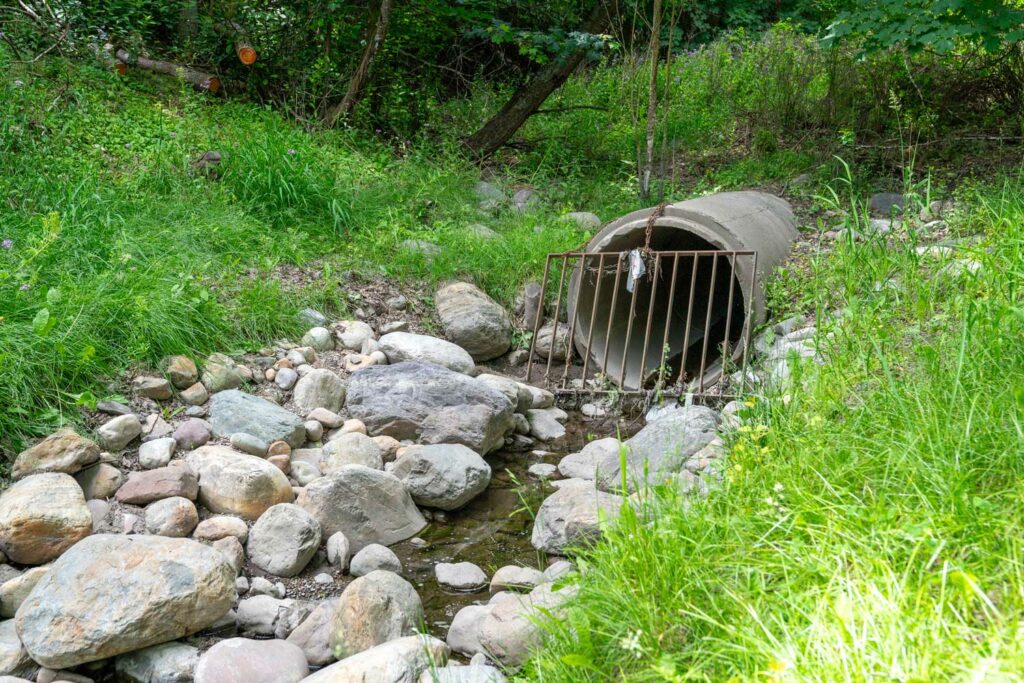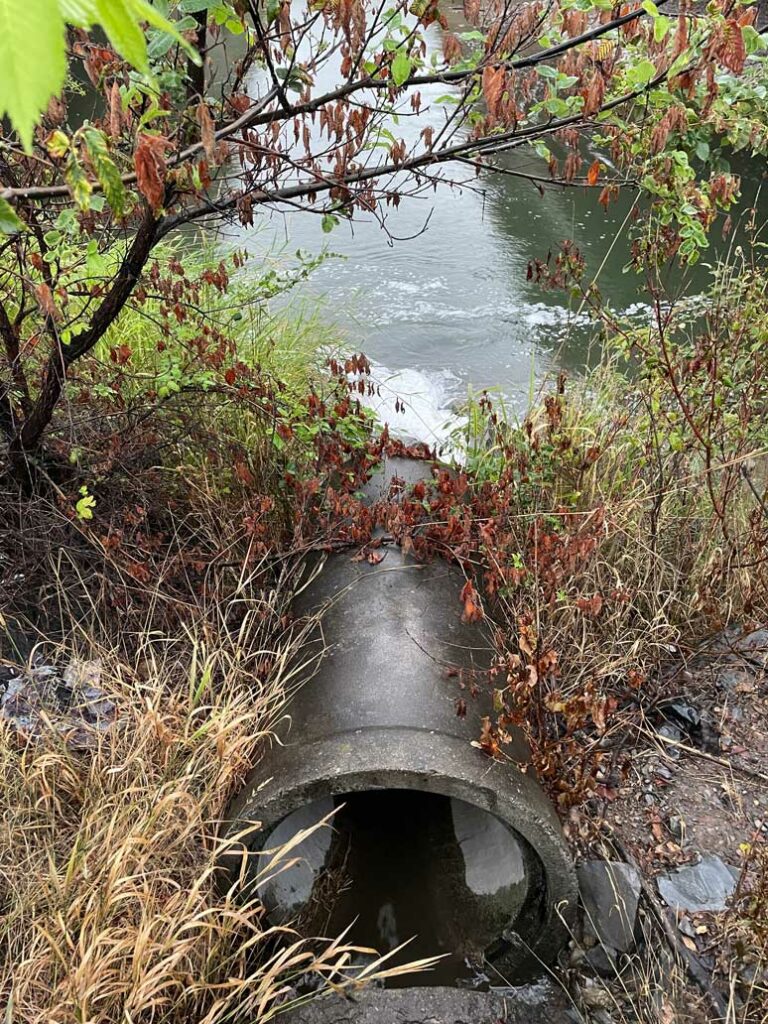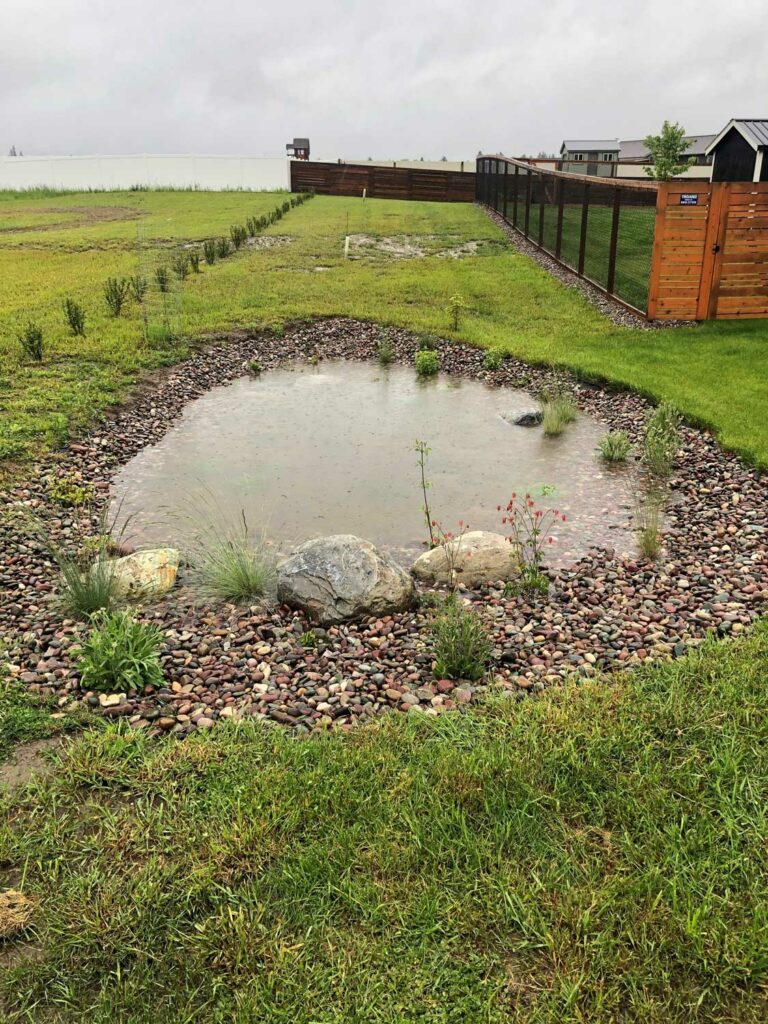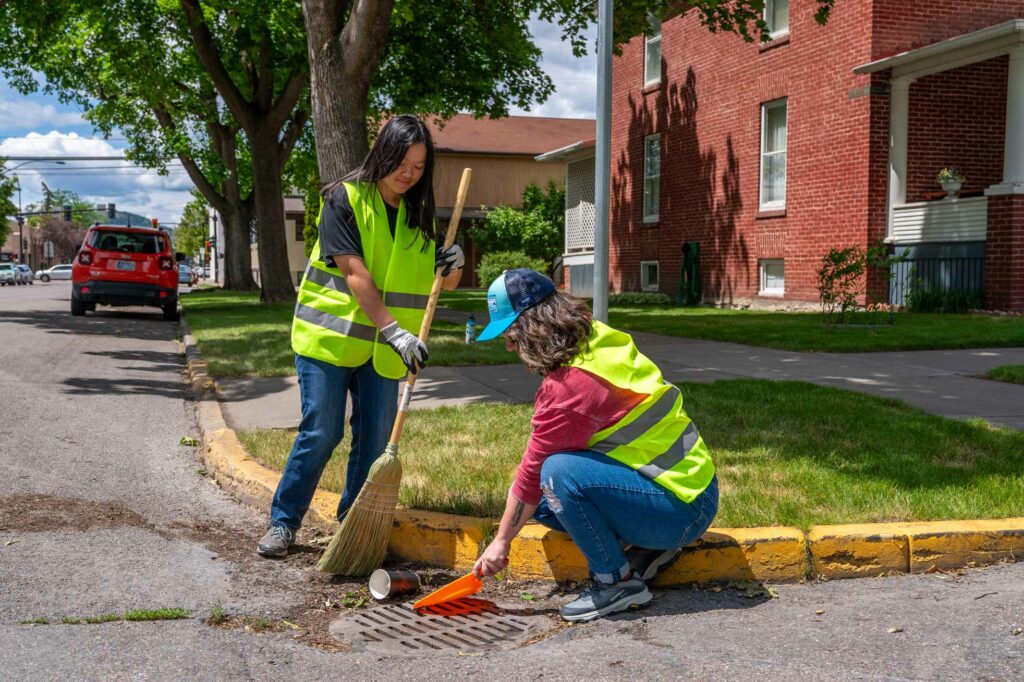
Stormwater is water from rain or snow that flows across the hard, or impervious, surfaces on the landscape. Impervious surfaces include rooftops, roadways, sidewalks, and compacted soil. As stormwater flows, it can pick up pollution on the ground. Common pollutants in stormwater include bacteria from pet waste, nutrients from excess fertilizers, oil and grease from leaky cars, and litter. In Montana, stormwater typically flows directly into our streams, rivers, and lakes without treatment, along with any pollutants it may be carrying. It is important for each of us to be mindful of what we leave on the landscape in order to reduce stormwater pollution, especially as populations grow and more impervious, urban areas are developed. Visit the Montana Waters website to learn more about how you can reduce stormwater pollution in your community.
The Western Montana Conservation Commission seeks to support municipalities, tribes, and community partners to better understand, manage, and maintain their stormwater infrastructure. WMCC emphasizes innovation and continuous improvement in the science and management of stormwater to best protect our aquatic resources while providing opportunities for community education, engagement, and empowerment.
Inventory & Modeling
The Western Montana Conservation Commission seeks to work with stormwater infrastructure managers to develop the best data to guide their management decisions. In 2020, the Flathead Basin Commission partnered with the City of Kalispell to develop an inventory of stormwater infrastructure in the Flathead Basin. This map of infrastructure included storm drains, pipes, and outfalls within both permitted and unpermitted cities and towns in the watershed.
Using this inventory, the Flathead Basin Commission then developed an outfall prioritization model to identify key areas in the watershed at the highest risk of stormwater pollution. These locations were provided to infrastructure owners and may serve as locations for increased stormwater monitoring and treatment in the future. For more information about the inventory and associated prioritization model, read the Phase 1 project report.


Local Partnerships
Recognizing the variable capacities and resources of infrastructure managers across the region, the Western Montana Conservation Commission strives to support communities across western Montana to best manage their stormwater to protect our shared natural resources. WMCC seeks to understand what barriers stormwater professionals in western Montana face when it comes to effectively managing and maintaining existing stormwater infrastructure as well as innovating in new infrastructure development. Working together with our local partners to minimize these barriers in order to protect water quality and increase community resilience is crucial. Read the Phase 2 project report to learn more about how WMCC plans to work toward these goals.
Flathead Rain Garden Initiative
In partnership with the Flathead Conservation District and the City of Kalispell, the Western Montana Conservation Commission supports the Flathead Rain Garden Initiative (FRGI). The goal of FRGI is to empower residents of Flathead County to mitigate stormwater pollution by building rain gardens on their property. Rain gardens are landscaped depressions filled with native plants that are designed to capture, filter, and absorb stormwater runoff. By building rain gardens in their yards, residents of Flathead County are protecting local water quality, increasing community resilience to flooding, and providing habitat for pollinators. Visit FRGI’s website to learn more about the benefits of rain gardens and how you can get involved.


Adopt-a-Drain
The City of Kalispell and the Western Montana Conservation Commission collaboratively support an Adopt-a-Drain program that recruits Kalispell volunteers to clear debris from the surface of storm drains in their neighborhoods. Leaves and trash on storm grates can enter the stormwater system, clog drains, and pollute local streams and ponds. To learn more about the program and to sign up, visit the Adopt-a-Drain website

